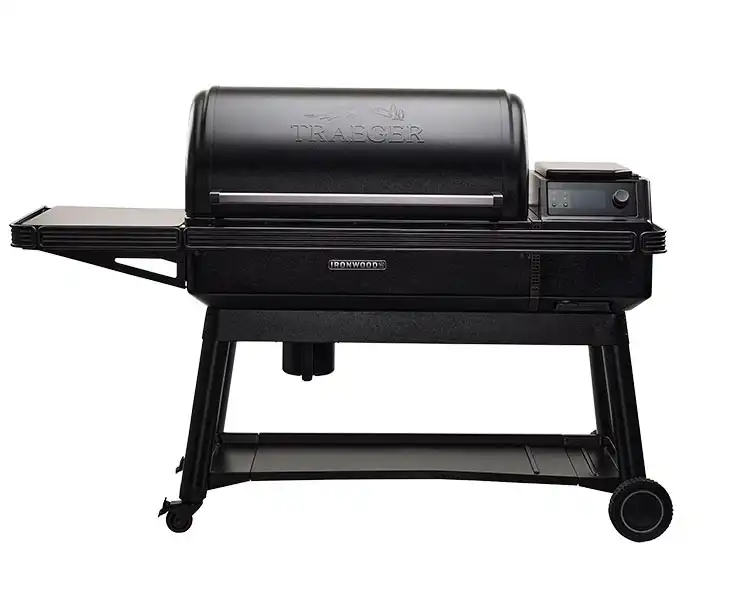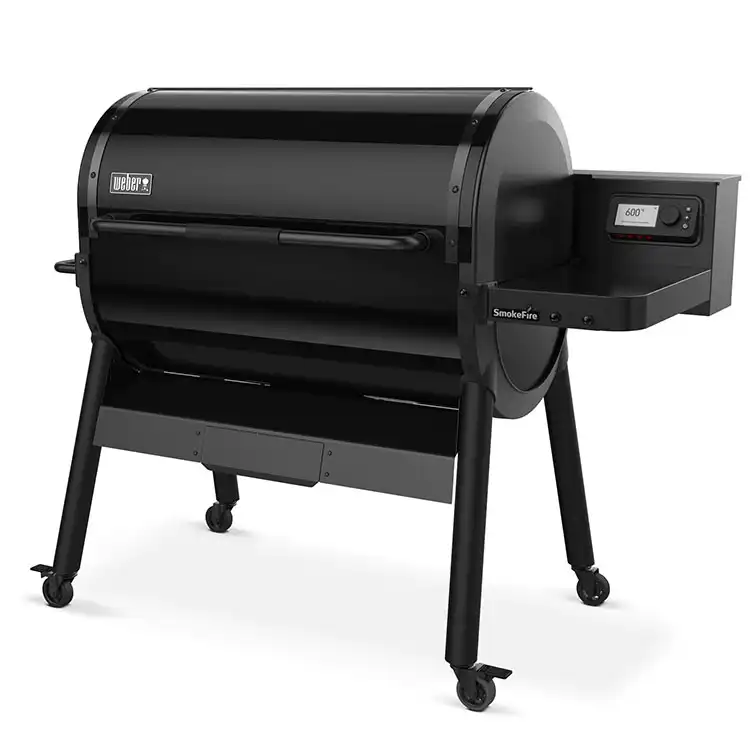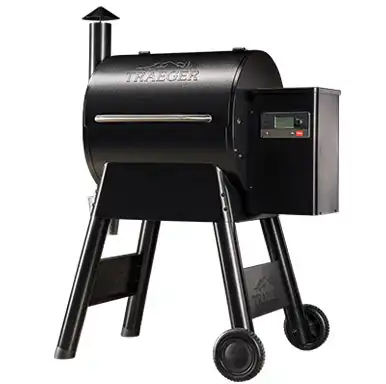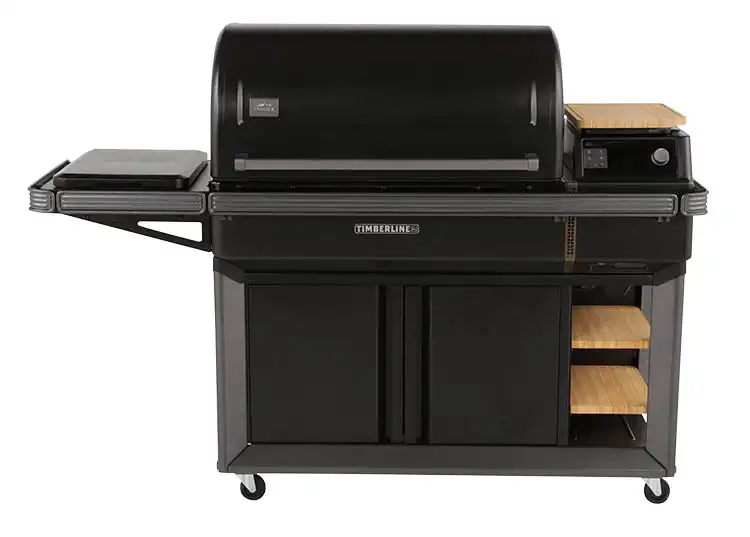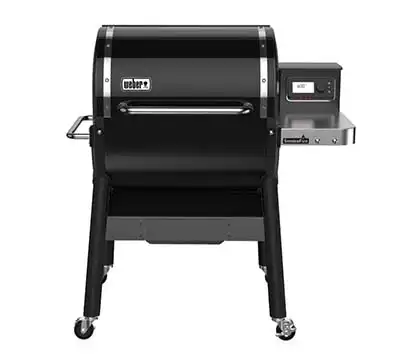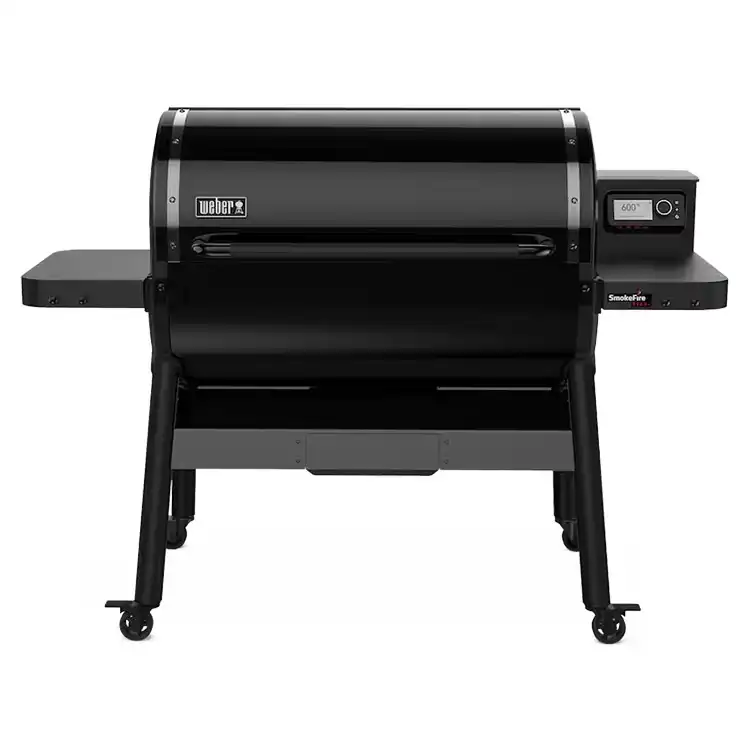Traeger VS Weber: Which Pellet Grill is Better?

While Traeger has been dominating the pellet grill market since they invented them back in the 1980s,
With the release of the SmokeFire pellet grill a few years ago, and a few upgrades and new additions,
In this article, I’ll be looking at the general differences between each brand and then drilling into a specific comparison between the SmokeFire Stealth edition and the new Traeger Ironwood. I’ve also made a video that goes through my experience cooking on each grill you can check out below.
|
|
|
|
- Great for low and slow
- Slightly more solid build quality
- More expensive than the Weber for less grilling area
- Great for both grilling and smoking
- Temperature probes with handy cord wrap cases
- Less prep and storage space
Weber VS Traeger: Who Makes the Best Pellet Grills?
I’ll go through a direct comparison between the SmokeFire and Ironwood in the next sections if you want to skip ahead, but to start with I wanted to cover some of the basic similarities and differences between the two brands to help you understand your options.
Traeger offers the most choice, with their pellet grill lineup broken into the budget-friendly Pro, the mid-range Ironwood, and the high-end Timberline. Each grill offers more features and better build quality, but the price jumps are significant.
Each option is available in two sizes, with the total cooking area available increasing as you go up the range.
The smallest Pro starts at $799.99, while the Timberline XL will set you back $3799.99 before accessories.
Traeger Pellet Grill Lineup
Weber has a more focused lineup, offering the SmokeFire Gen 2 in two sizes, the Stealth in one size, and two Sear+ editions which give you all the upgrades of the Stealth plus a two-sided porcelain enamel searing grate and a few small improvements.
The cheapest
Weber Pellet Grill Lineup
While there’s a bit of a price difference, we decided on the
Traeger Ironwood Vs Weber Stealth Head to Head
The
These two pits made the most sense for a head-to-head comparison because they share a lot of features. That doesn’t mean they’re the same though, each grill has some unique areas it excels at.
Make sure you read to the bottom where I go through everything I cooked on each pit and how it turned out.

Specifications
| Traeger Ironwood XL | Weber SmokeFire Stealth | |
| Weight | 243 lbs | 204 lbs |
| Cooking surface | 924 square inches (594 bottom + 330 top ) | 1,008 square inches (648 bottom + 360 top) |
| Max Temp | 165-500°F | 200-600°F |
| Hopper | 22 Lbs | 20 Lbs |
| Smoke Boost | Yes | Yes |
| Pellet Sensor | Yes | Yes |
| Warranty | 10 Years | 5 Years (3 years on electrical components and cooking grates) |
| Price | Check latest price | Check latest price |
Build quality and design
Both the Traeger Ironwood XL and
The

The Traeger Ironwood, on the other hand, weighs 243 pounds and measures 70 inches wide, 48 inches tall, and 25 inches deep. Its powder-coated, double-walled cooking chamber ensures better heat retention during cold winter months.
The Ironwood comes with a large side shelf and a heavy-duty bottom shelf, which provided ample storage for pellets, tools, and other barbecue supplies.
The

The
Cooking Space and Grates
The
The grates are made out of plated steel. The Traeger Ironwood features 924 square inches of cooking space, with 594 on the bottom and 330 on the top warming rack.
The Ironwood’s grates are made of porcelain-coated steel.

Both grills come with grill lights for nighttime cooking. The light on the Traeger turns on automatically when the lid is opened, while on the


Digital Controllers
The SmokeFire Stealth has the

The Stealth controller provides four probe ports and comes with two meat probes, making it easy to monitor the temperature of multiple cuts of meat simultaneously.

The controller also has a smoke boost feature, where the temperature fluctuates between 165-200°F for increased smokiness during cooking.
The Traeger Ironwood grill is equipped with the D2 Direct Drive WiFire PID controller and boasts a temperature range of 165-500°F, adjustable in 5-degree increments.
Unlike the

The Ironwood controller also features a Super Smoke mode, which can be engaged between 165-225°F, and a Keep Warm mode that runs between 165-195°F, perfect for maintaining the temperature of your barbecue until it’s time to serve.
The Ironwood controller has two probe ports and comes with two color-coordinated probes.

I much prefer the storage cases you get with the
Accessories
With the Ironwood you get Traegers P.A.L Pop-And-Lock accessory system which allows you to purchase various accessories like a spice rack, tool hooks, and even a paper towel rack.

I really appreciated the flexibility this system offered, as I could position these accessories wherever I wanted, customizing the setup to my needs.
With
Apps and connectivity
The
The app offers several guided recipes that walk you through the cooking process step by step, making it easier for beginners to get started with grilling and smoking.

Although the
The Traeger app is more advanced compared to the

Cleaning and maintenance
Neither grill has an ash cleanout system for the fire pot, something that I always want to see on higher-end grills. Especially when Camp Chef is putting it on grills that are cheaper than either option from
Both have hidden ash and grease catches. The Traeger Ironwood uses a standard grease liner, while the


Assembly & mobility
Both grills took me and my boys over an hour of assemble. I would recommend assembly both grills with two people.
For the Traeger Ironwood, we found the assembly process was slightly easier. The grill comes with a helpful handle inside the bottom of the box, allowing you to flip the grill on its back more easily during leg assembly.
The
The Traeger Ironwood has two locking casters and two wagon wheels, while the
Cooking Performance
The Traeger Ironwood excels in low and slow cooking, perfect for smoking meats to achieve that tender, fall-off-the-bone texture. When I cooked spicy spare ribs on the Ironwood, I was amazed by the depth of the smoke ring on the bones.
The grill also did an excellent job with beef cheeks, which came out tender and flavorful.
I smoked a turkey on the Ironwood, and the color and taste were simply incredible. The grill’s temperature range of 165 to 500 degrees Fahrenheit allows for versatile cooking, but it might not be the best choice for high-heat grilling.
The
The higher temperature range makes it perfect for searing meats and achieving those beautiful grill marks. When I grilled red shrimp on the Stealth Edition, they turned out to be the best I’ve ever cooked on any grill. I also smoked a prime brisket, and the smoke ring was picture-perfect. The Stealth Edition’s ability to reach 600 degrees Fahrenheit allowed me to cook thin-crust pizzas in under eight minutes, which was a definite bonus.
However, I noticed that when cooking barbecue-style dishes on the Stealth Edition, the food seemed a tad drier. To counter this issue, I’d recommend adding a water pan during low and slow cooking sessions.
Final Thoughts
Both the Traeger Ironwood XL and the
The Traeger Ironwood is ideal for those who prefer low and slow cooking, while the
Quality-wise, both grills are comparable, but the Traeger Ironwood’s beefier build and more robust controller and app give it a slight edge.

